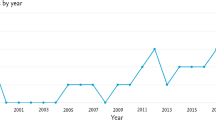Abstract
The purpose of this paper is to discuss the use of Value Efficiency Analysis (VEA) in efficiency evaluation when preference information is taken into account. Value efficiency analysis is an approach, which applies the ideas developed for Multiple Objective Linear Programming (MOLP) to Data Envelopment Analysis (DEA). Preference information is given through the desirable structure of input- and output-values. The same values can be used for all units under evaluation or the values can be specific for each unit. A decision-maker can specify the input- and output-values subjectively without any support or (s)he can use a multiple criteria support system to assist him/her to find those values on the efficient frontier. The underlying assumption is that the most preferred values maximize the decision-maker's implicitly known value function in a production possibility set or a subset. The purpose of value efficiency analysis is to estimate a need to increase outputs and/or decrease inputs for reaching the indifference contour of the value function at the optimum. In this paper, we briefly review the main ideas in value efficiency analysis and discuss practical aspects related to the use of value efficiency analysis. We also consider some extensions.
Similar content being viewed by others
References
Allen, R., A. Athanassopoulos, R. G. Dyson and E. Thanassoulis. (1997). “Weights Restrictions and Value Judgements in Data Envelopment Analysis: Evolution, Development and Future Directions.” Annals of Operations Research 73, 13-34.
Arnold V., I. Bardhan, W. W. Cooper and A. Gallegos. (1997). “Primal and Dual Optimality in Computer Codes Using Two-Stage Solution Procedures in DEA.” (Forthcoming in Aronson, J. and S. Zionts (Eds.): Operations Research: Models, Methods and Applications. Norwell: Kluwer (A Volume in honor of G. L. Thompson)).
Banker, R. D., A. Charnes and W. W. Cooper. (1984). “Some Models for Estimating Technical and Scale Inefficiencies in Data Envelopment Analysis.” Management Science 30, 1078-1092.
Charnes, A., W. W. Cooper and E. Rhodes. (1978). “Measuring Efficiency of Decision Making Units.” European Journal of Operational Research 2, 429-444.
Charnes, A., W. W. Cooper and E. Rhodes. (1979). “Short Communication: Measuring Efficiency of Decision Making Units.” European Journal of Operational Research 3, 339.
Charnes, A., W. W. Cooper, A. Y. Lewin and L. M. Seiford. (1995). Data Envelopment Analysis: Theory, Methodology and Applications. Boston: Kluwer.
Halme, M., T. Joro, P. Korhonen, S. Salo and J. Wallenius. (1999). “A Value Efficiency Approach to Incorporating Preference Information in Data Envelopment Analysis.” Management Science 45, 103-115.
Joro, T., P. Korhonen and J. Wallenius. (1998). “Structural Comparison of Data Envelopment Analysis and Multiple Objective Linear Programming.” Management Science 44, 962-970.
Korhonen, P. (1987). “VIG-A Visual Interactive Support System for Multiple Criteria Decision Making.” Belgian Journal of Operations Research, Statistics and Computer Science 27, 3-15.
Korhonen, P. (1988). “A Visual Reference Direction Approach to Solving Discrete Multiple Criteria Problems.” European Journal of Operational Research 34(2), 152-159.
Korhonen, P. (1997). “Searching the Efficient Frontier in Data Envelopment Analysis.” Interim Report IR-97-79, International Institute for Applied Systems Analysis.
Korhonen, P. and J. Karaivanova. (1999). “An Algorithm for Projecting a Reference Direction onto the Nondominated Set of Given Points.” IEEE Transactions on Systems, Man, and Cybernetics-Part A: Systems and Humans 29(5), 429-435.
Korhonen, P. and J. Laakso. (1986). “A Visual Interactive Method for Solving the Multiple Criteria Problem.” European Journal of Operational Research 24, 277-287.
Korhonen, P., A. Siljamäki and M. Soismaa. (1998). “Practical Aspects of Value Efficiency Analysis.” Interim Report IR-98-42, International Institute for Applied Systems Analysis.
Korhonen, P., R. Tainio and J. Wallenius. (1998). “Value Efficiency Analysis of Academic Research.” European Journal of Operational Research 130, 121-132.
Korhonen, P. and J. Wallenius. (1988). “A Pareto Race.” Naval Research Logistics 35, 615-623.
Pedraja-Chaparro, F., J. Salinas-Jimenez and P. Smith. (1997). “On the Role of Weight Restrictions in Data Envelopment Analysis.” Journal of Productivity Analysis 8, 215-230.
Steuer, R. E. (1986). Multiple Criteria Optimization: Theory, Computation, and Application. New York: Wiley.
Thompson, R. G., F. Singleton, R. Thrall and B. Smith. (1986). “Comparative Site Evaluations for Locating a High-Energy Physics Lab in Texas.” Interfaces 16, 35-49.
Wierzbicki, A. (1980). “The Use of Reference Objectives in Multiobjective Optimization.” In G. Fandel and T. Gal (Eds.), Multiple Objective Decision Making, Theory and Application. New York: Springer-Verlag.
Wierzbicki, A. (1986). “On the Completeness and Constructiveness of Parametric Characterizations to Vector Optimization Problems.” OR Spektrum 8, 73-87.
Author information
Authors and Affiliations
Rights and permissions
About this article
Cite this article
Korhonen, P., Soismaa, M. & Siljamäki, A. On the Use of Value Efficiency Analysis and Some Further Developments. Journal of Productivity Analysis 17, 49–64 (2002). https://doi.org/10.1023/A:1013532219759
Issue Date:
DOI: https://doi.org/10.1023/A:1013532219759




